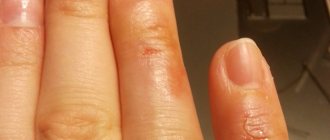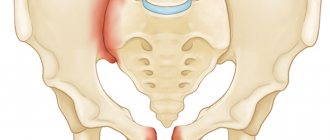For some travelers, a beach holiday on the Black or Mediterranean Sea is overshadowed by an unpleasant encounter with jellyfish. The bites of these sea creatures are very painful. Hydroid toxins entering the body cause burns, redness and blisters on the body. In the absence of qualified assistance from a jellyfish sting, the victim may die or remain paralyzed. Treatment of an allergic reaction after exposure to hydroid stinging thread depends on the severity of the allergic reaction. First aid after a jellyfish burn is usually provided immediately on the beach.
Types of jellyfish
There are few species of hydroids in the world whose poison is dangerous to humans. Although all types of jellyfish have stinging cells and, if necessary, attack the victim. Typically, these sea creatures sting to obtain food or to defend themselves in case of danger.
Most dangerous jellyfish live in the tropics. They are bright and easily visible from afar. The bright color of their dome warns of danger. The Cornerot jellyfish is found near the Black Sea coast. Its dome in diameter ranges from 20 to 80 cm, and the tentacles grow up to 30 cm long. These hydroids pose a moderate danger. After being stung by Black Sea jellyfish, permanent burns remain.
On a note!
In the Pacific Ocean there are very dangerous cnidarians Irukandji. This jellyfish is very small, but its bite is fatal. Black hydroids are found in Tunisia, causing no less harm to travelers. The burn they leave behind is painful and poisonous.
For some travelers, a holiday on the beaches of Spain ends with a meeting with the Portuguese Man of War; he also lives in Thailand and Italy. There are dangerous Box Jellyfish in the waters of the Mediterranean Sea, but they do not swim close to the coast. Cnidarians called “sea nettles” also live there. In Thailand, the jellyfish activity period begins in May and ends in October. During the summer months, deadly Box Jellyfish swim up to the beaches. In this case, using the beaches and swimming in the ocean is prohibited.
There are a lot of hydroids near the beaches of Vietnam. The species found there do not cause significant harm to humans. The inconvenience of meeting them lies in their large number. Sometimes there are so many jellyfish that it is impossible to swim. Therefore, local residents prefer to swim in their clothes to protect themselves from accidental contact.
First aid
If you get stung by a jellyfish, here's what to do:
Get out of the water immediately
As soon as you realize you've been stung, and trust me, you won't miss it, it's important to get out of the water. Not only to treat the bite, but also because it can cause anaphylactic shock or loss of consciousness due to pain. The last place you want to be is in the water when this happens.
Next step
Remove stinging tentacles from the skin immediately as they contain toxic nematocysts that cause pain. Be sure to wear gloves when removing or use a stick, tweezers, sand, beach towel or even a credit card to scrape them off your skin.
Vinegar (3-10% acetic acid) will help with box jellyfish stings, but not with Portuguese Man of War stings. Salt water helps if vinegar is not available.
It is not recommended to drink alcohol or rub wounds with ammonia, fresh water, or urine, as this releases more poison. Clearing the area of tentacles reduces the burning sensation.
Scraping the affected skin, such as with the edge of a credit card, will help remove any remaining nematocysts. After cleansing the skin, hydrocortisone cream applied locally reduces pain and inflammation. Antihistamines relieve itching.
Find out more Consequences of a pike bite
Immune antivenoms are used for serious jellyfish stings.
Signs of a dangerous jellyfish sting
Most bites are not serious, but some species have a potentially fatal venom.
Most jellyfish stings are painful, but not dangerous. But for people with allergies, weakened immune systems, old or very young, the venom can be deadly.
Any signs of shock or an allergic reaction require immediate attention. Warning signs:
- labored breathing;
- dizziness;
- rapidly spreading rash;
- nausea;
- changes in consciousness.
Anyone experiencing these symptoms should call the emergency room immediately.
Some jellyfish are potentially fatal, especially after several stings.
For example, the most dangerous species is the Australian box jellyfish, which kills several people every year.
Many jellyfish-related deaths are actually the result of drowning following muscle spasms that occur after the sting.
The tentacles contain a poison that, in a worst-case scenario, will destroy the cardiovascular system in just a few minutes. Poisonous marine life is most common in the waters off the coast of Australia.
People with allergies, especially to insect stings, are more likely to have an allergic reaction to jellyfish. They should always carry an epinephrine injection pen and allergy medications as prescribed by their doctor.
When victims cannot see them, it is impossible to immediately determine whether the source was unsafe or potentially lethal.
You should seek medical help if:
- there have been reports of poisonous marine animals in the area;
- the jellyfish was very big;
- there are numerous tentacles at the site of the bite, as this means more venom is delivered;
- the bite occurred in the eye or mouth;
- there are signs of a serious reaction, such as difficulty breathing, fast heart rate, loss of consciousness, muscle spasms;
- the rash appears on any area of the body, not just near the bite site.
First aid for small jellyfish bites
A 2020 study found that simple steps reduce pain. They looked at the honey jellyfish, which has large tentacles that cause very painful stings. The conclusions apply to most species of poisonous shellfish.
The following steps should be completed as quickly as possible:
- Rinse the affected area thoroughly with vinegar;
- Remove tentacles when rinsing. The tentacles may continue to sting as long as they are in contact with the skin, so wear gloves or plastic bags on your hands;
- Apply a heat pack or immerse the affected area in water at least 113°F (45°C) for 40 minutes.
Find out more Can sea snakes bite people?
If vinegar and hot water are not available, carefully remove the tentacles.
After you've been stung, don't swim for the rest of the day, as salt water will make the pain worse. More importantly, there are likely other poisonous inhabitants in the area.
When the tentacles penetrate the skin and enter the bloodstream, the wound can become infected. Therefore, a tetanus shot may be required. It is important to see a doctor within the next hour if there is an open wound.
Some bites cause pain and itching for several days. Some home remedies may help. These include:
- Hot packs to reduce swelling and inflammation;
- Nonsteroidal anti-inflammatory drugs such as acetaminophen, ibuprofen;
- An antibiotic cream such as Neosporin to reduce the risk of infection.
If the area becomes very painful, begins to swell, or there is discharge from the wound, it may be an infection. You must consult a doctor immediately.
Jellyfish burn and its dangers
Hydroid venom causes paralysis or death of small marine animals and fish. For humans, contact with only a few species of coelenterates is fatal. The rest leave burns on the body with their stinging cells, accompanied by severe pain. It has been noted that species of hydroids living in the ocean sting more strongly than marine inhabitants. Traces from jellyfish bites look like threads. The pain depends on the type of hydroid and the size of the affected area. You can see in more detail in the photo what a jellyfish burn looks like.
Upon contact with a small number of stinging cells, a person receives a small dose of poison. It does not pose a serious danger and causes minor skin irritation. If the lesions are extensive and cover more than half the area of the limb, toxins enter the bloodstream and quickly spread throughout the body. Bites to the head and neck cause especially severe consequences.
For children, contact with hydroids is very dangerous. Unlike adults, their affected skin areas are larger and the dose of poison is greater. Elderly people and allergy sufferers are also at risk. Their immune system does not provide effective protection. Therefore, even a small amount of jellyfish venom causes dangerous consequences such as cardiac arrest, swelling of the respiratory tract, and anaphylactic shock.
Dangerous marine representatives
Jellyfish are incredibly beautiful and look quite harmless . But since they also need to eat and be able to protect themselves from enemies, nature has endowed them with special cells - stinging . Each jellyfish is special. For example, some are pointed threads that, when pierced into the victim, inject a toxic liquid . In others, the threads are covered with a special sticky substance, due to which they stick around the victim with many stinging cells. The venom of many jellyfish causes not only burns, but can also turn off a person’s nerve endings , and then spasms, confusion, and, in some cases, pulmonary edema begin.
Symptoms of a jellyfish sting
The peculiarity of the effects of hydroid toxins is the slow development of symptoms. Often visible traces of burns appear on the body only after 40-60 minutes. During this time, the concentration of jellyfish venom becomes maximum. At the site of contact with the stinging threads, red spots remain that do not go away for a long time. The skin begins to itch and become covered with blisters and blisters. In addition to these signs of a burn, allergic rashes appear and swelling develops.
If the burn is caused by dangerous varieties of hydroids, additional signs appear:
- convulsions;
- high body temperature;
- neurological pain;
- tachycardia;
- nausea;
- dizziness.
Important!
In people prone to allergies, after contact with hydroids, breathing becomes difficult, sweat appears, and blood pressure increases. In severe cases, suffocation and other signs of anaphylactic shock develop.
Therapeutic measures
If these methods do not help, it means that the person was bitten by an extremely poisonous jellyfish. You cannot do without emergency medical care. Signs of severe intoxication include febrile temperature, convulsive and febrile states.
- If you have a severe allergy to jellyfish venom, antiallergic drugs are offered in the form of injections. Shock therapy prevents acute allergic reactions and possible complications. When a deadly toxin enters the human body, an antidote is given. Unfortunately, it is not always possible to neutralize the harm of the poison. The good news is that the most dangerous jellyfish are found in exotic countries far from the coast.
- A week later, the victim’s condition stabilizes. If this does not happen, the likelihood of full recovery is reduced. In case of severe intoxication, comatose states are not excluded. If breathing stops, artificial ventilation is performed. The victim is given injections of drugs to stimulate the heart rate, and IVs are placed to restore the water-salt balance. The treatment tactics are chosen by the toxicologist together with the resuscitator.
Uncomplicated bites can be treated successfully. The patient is sent home the next or on the same day. Painkillers or anesthetic ointments, non-steroidal anti-inflammatory drugs, Paracetamol or Nurofen are prescribed to relieve pain.
At the healing stage, it is recommended to treat the skin with regenerating agents. Baneocin heals the skin well. It is available in ointment and powder form and is effective on burns. This is a combined antibiotic for external use with a wide therapeutic spectrum.
To avoid leaving marks on the skin, adhere to the following rules:
- Avoid mechanical impact until wounds are completely healed;
- It is not recommended to swim until the symptoms subside;
- anti-scar ointments are used as prophylaxis in consultation with a doctor;
- if the bite site is very painful and inflamed, use painkillers orally;
- Salted water is suitable for washing the skin.
Burns to the genitals and face pose a particular danger. In this case, the mucous membranes suffer, which are more difficult to restore. The duration of therapy is determined by the intensity of exposure to the toxin. Light burns disappear in 2-3 days. Severe injuries require prolonged hospitalization and months of rehabilitation. The sooner the victim receives first aid, the lower the risk of complications.
This is interesting: Side effects from taking Postinor
Actions to take if stung by a jellyfish
Typically, a hydroid burn is not life-threatening. Therefore, the victim is able to carry out emergency assistance and subsequent treatment on his own. There are several exceptions that may require immediate medical attention:
- There was contact with a combo jellyfish. To save the victim, special serums are needed.
- A severe allergy develops quickly.
- Burns cover more than half the body area or the damaged areas are localized near large vessels.
Preventing jellyfish stings
When going on a beach holiday, you need to find out in advance what types of marine life are found there. The information will protect you from visiting dangerous places and will make it possible to collect everything you need to provide first aid in the event of an accident.
When swimming in the sea, it is not recommended to swim close to jellyfish. It should be taken into account that some oceanic varieties of hydroids have very long, thin and transparent tentacles. Therefore, they are easy to miss in muddy water. Some jellyfish are capable of stinging if the dome is several meters away.
Important!
You cannot swim if the sea is rough or stormy. At this time, fragments of tentacles float in the water, which are no less dangerous than living jellyfish.
Reviews
Matvey, 32 years old:
I received very severe burns from a jellyfish in Tunisia. I saved myself with an ordinary tomato. I cut it into slices and applied it to the affected areas. The pain went away quickly. It took several days for the swelling to go away.
Stepan, 40 years old:
I needed hospitalization after being stung by a jellyfish. There, local doctors scrubbed the skin for a very long time with a liquid that smelled like ammonia. Then they gave me ointment and antihistamines. After healing, the scars remained for a very long time until I bought Thai ointment. The burn marks disappeared within two weeks.
Most types of hydroids are not dangerous to humans. With proper emergency care, burns will go away within a few weeks. But to be safe, it is better to find out in advance about the species of jellyfish that live in local waters and prepare everything necessary for treatment.
What can't you do?
There are certain actions that are highly discouraged and even prohibited to do if you are stung by a jellyfish, so as not to harm your health. First of all, do not rub the affected area that is burned. This threatens even greater damage to the skin with increased release of toxic substances from the area of stinging cells.
It is important not to touch the burn site with unprotected hands, so as not to receive additional burns in the area of the hands, and also to rinse the burn site with fresh water, which leads to the destruction of some of the epithelial cells, which will lead to increased pain. Sea water, because of the salt in it, does not allow cells to deteriorate too much, dehydrating them and reducing the feeling of pain. The only exception to water and rinsing would be if jellyfish venom gets into the eye area.
You should not rub your eyes and face with your hands if you have touched parts of the jellyfish with them , and you should not touch your skin with them until they have been thoroughly washed. After a burn, you should not sunbathe this area, which will worsen the burn wound. Also, you should not take alcohol against the background of a jellyfish sting - it increases the toxicity of the poison.











